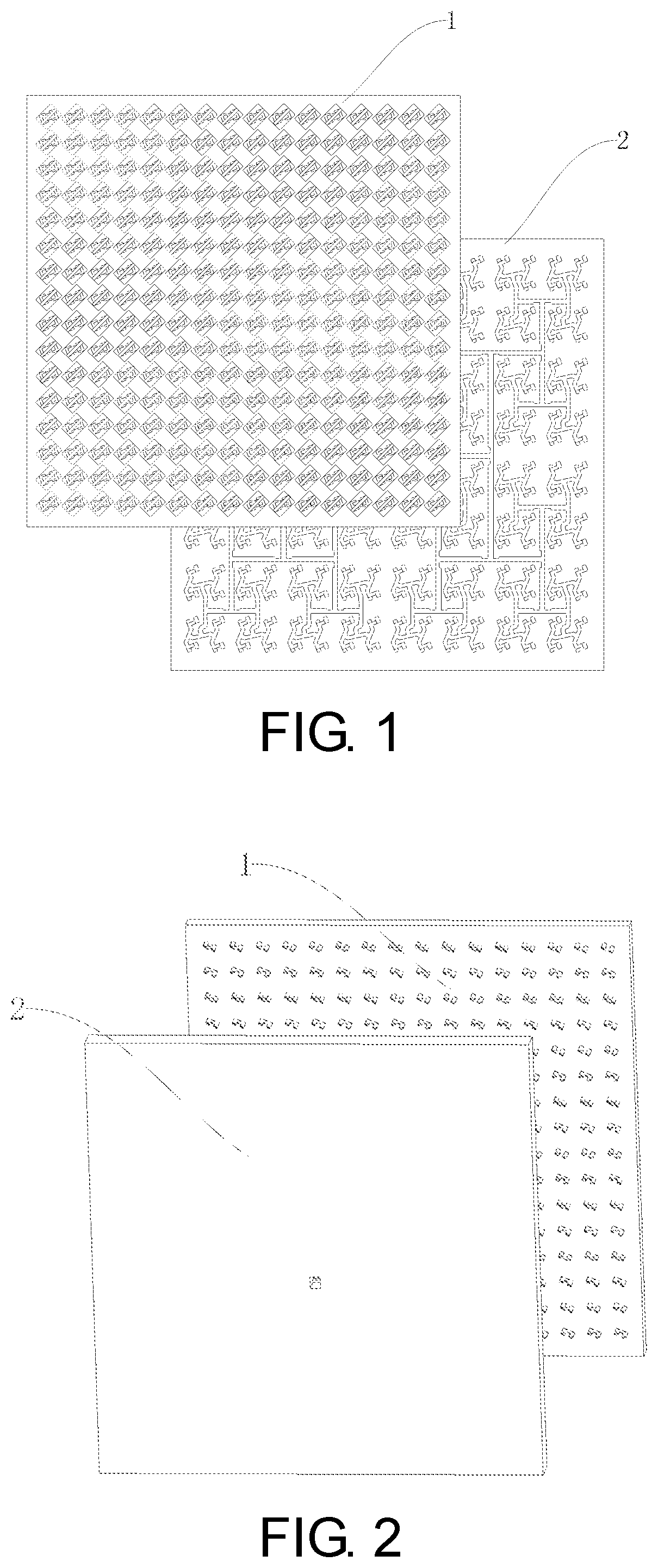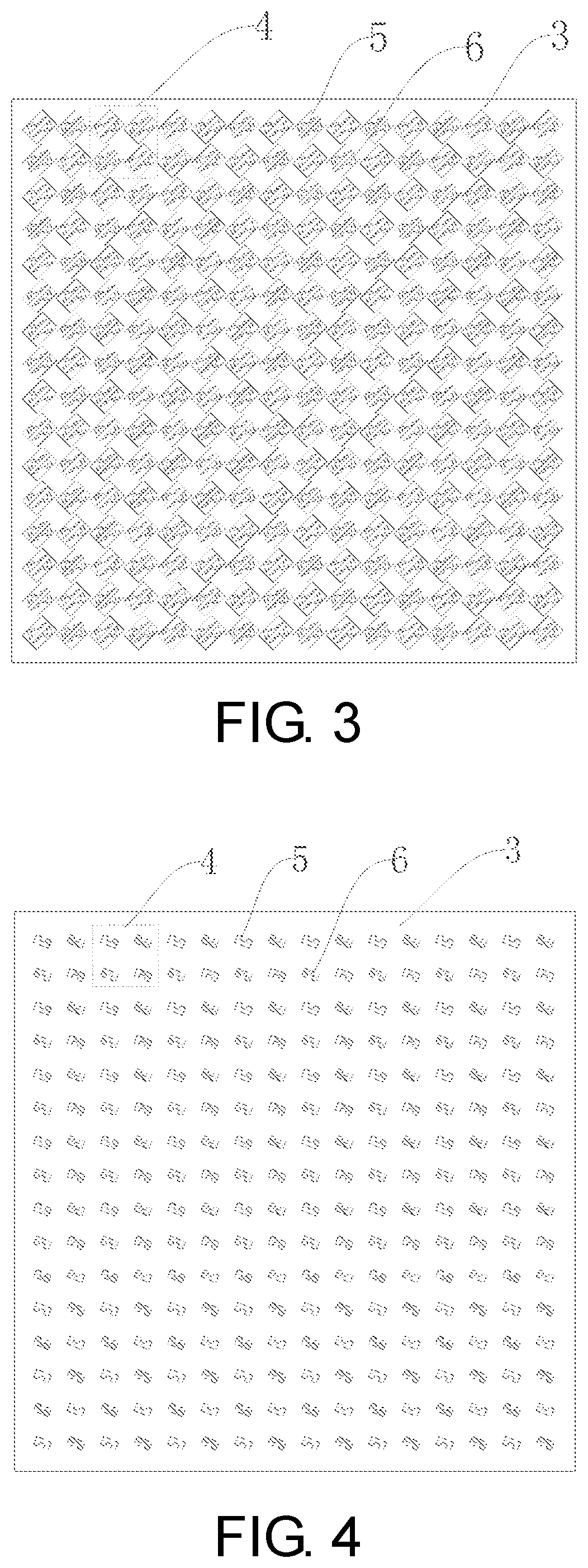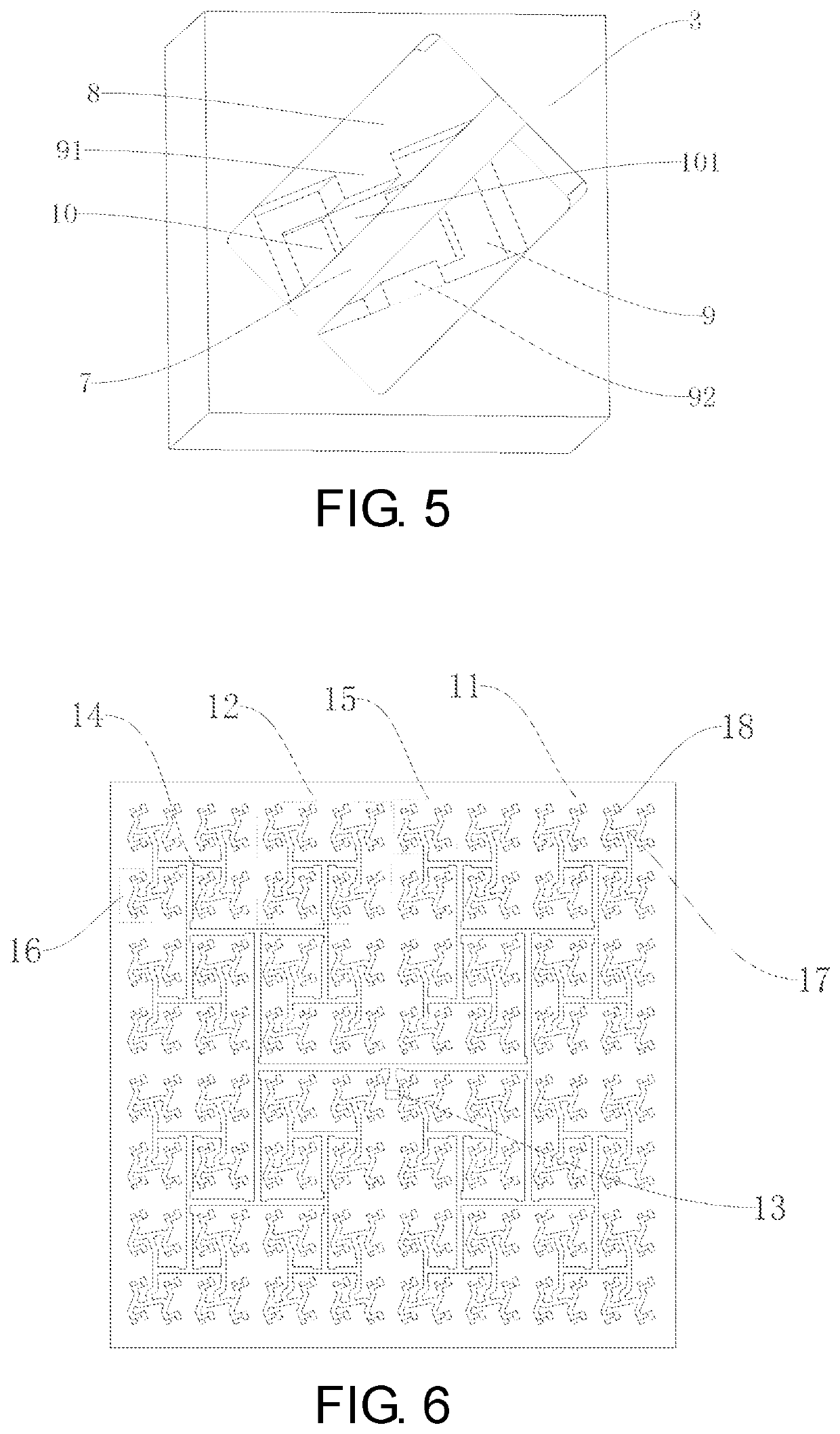Low-sidelobe plate array antenna
a low-sidelobe plate, array antenna technology, applied in the structure of radiating elements, individual energised antenna arrays, particular array feeding systems, etc., can solve the problems of increasing insertion loss, micro-strip array antennas can fulfill a wide band, and cannot fulfill high frequency, high efficiency or high gain
- Summary
- Abstract
- Description
- Claims
- Application Information
AI Technical Summary
Benefits of technology
Problems solved by technology
Method used
Image
Examples
Embodiment Construction
[0072]The invention will be further expounded below in conjunction with the accompanying drawings and embodiments.
[0073]Embodiment: as shown in FIG. 1 and FIG. 2, a low-sidelobe plate array antenna comprises a radiation layer 1 and a feed layer 2, wherein the radiation layer 1 is superimposed on the feed layer 2, the feed layer 2 is used to output 4*n2 TE10 mode signals, the radiation layer 1 has 4*n2 input terminals and 4*n2 output terminals, the 4*n2 TE10 mode signals output by the feed layer 2 are accessed to the 4*n2 input terminals of the radiation layer 1 in a one-to-one correspondence, the 4*n2 output terminals of the radiation layer 1 are used to radiate the 4*n2 TE10 mode signals output by the feed layer 2 to a free space in a one-to-one correspondence, n=2(k-1), and k is an integer greater than or equal to 3; as shown in FIG. 3-FIG. 5, the radiation layer 1 comprises a first plate 3 and a radiation array disposed on the first plate 3, wherein the first plate 3 is a rectang...
PUM
 Login to View More
Login to View More Abstract
Description
Claims
Application Information
 Login to View More
Login to View More - R&D
- Intellectual Property
- Life Sciences
- Materials
- Tech Scout
- Unparalleled Data Quality
- Higher Quality Content
- 60% Fewer Hallucinations
Browse by: Latest US Patents, China's latest patents, Technical Efficacy Thesaurus, Application Domain, Technology Topic, Popular Technical Reports.
© 2025 PatSnap. All rights reserved.Legal|Privacy policy|Modern Slavery Act Transparency Statement|Sitemap|About US| Contact US: help@patsnap.com



